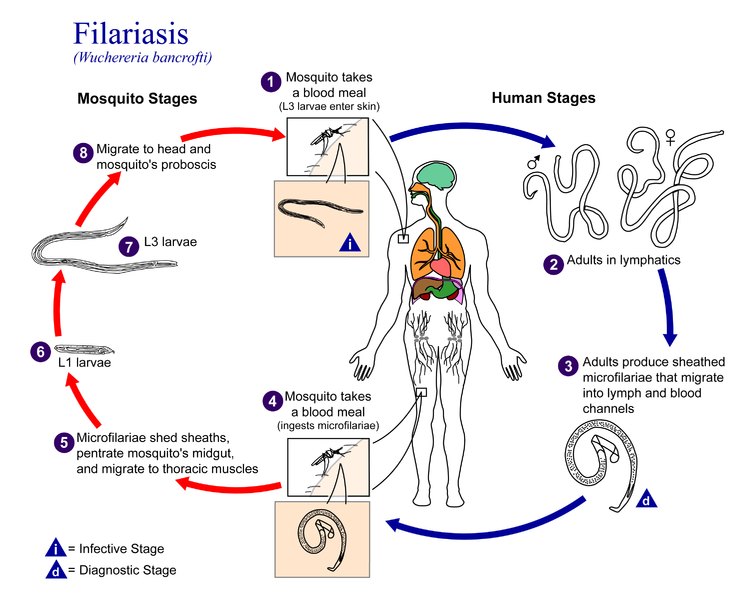filariasis

The life cycle of Wuchereria bancrofti, one the causal agents of filariasis. Image credit: CDC/Alexander J. da Silva, PhD/Melanie Moser.
Filariasis is a group of parasitic diseases of warm climates caused by various parasitic worms or their larvae, which are transmitted to humans by certain species of mosquitoes and other blood-sucking insects. When the blood of an infected person is sucked by a mosquito, the larvae are ingested by the insect which can then infect the next person it bites. Symptoms include fever, lymph node enlargement, abscesses, epididymal inflammation, and signs of allergy; elephantiasis may result. A special type, onchocerciasis, or river blindness, leads to skin rash, eye disease, sometimes causing blindness, and muscle pains or nodules. Some cause lung disease and increased blood eosinophils. Diagnosis is by special staining of blood films and skin tests. Treatment and prevention are with diethylcarbamine or ivermectin; mosquito control is needed.


